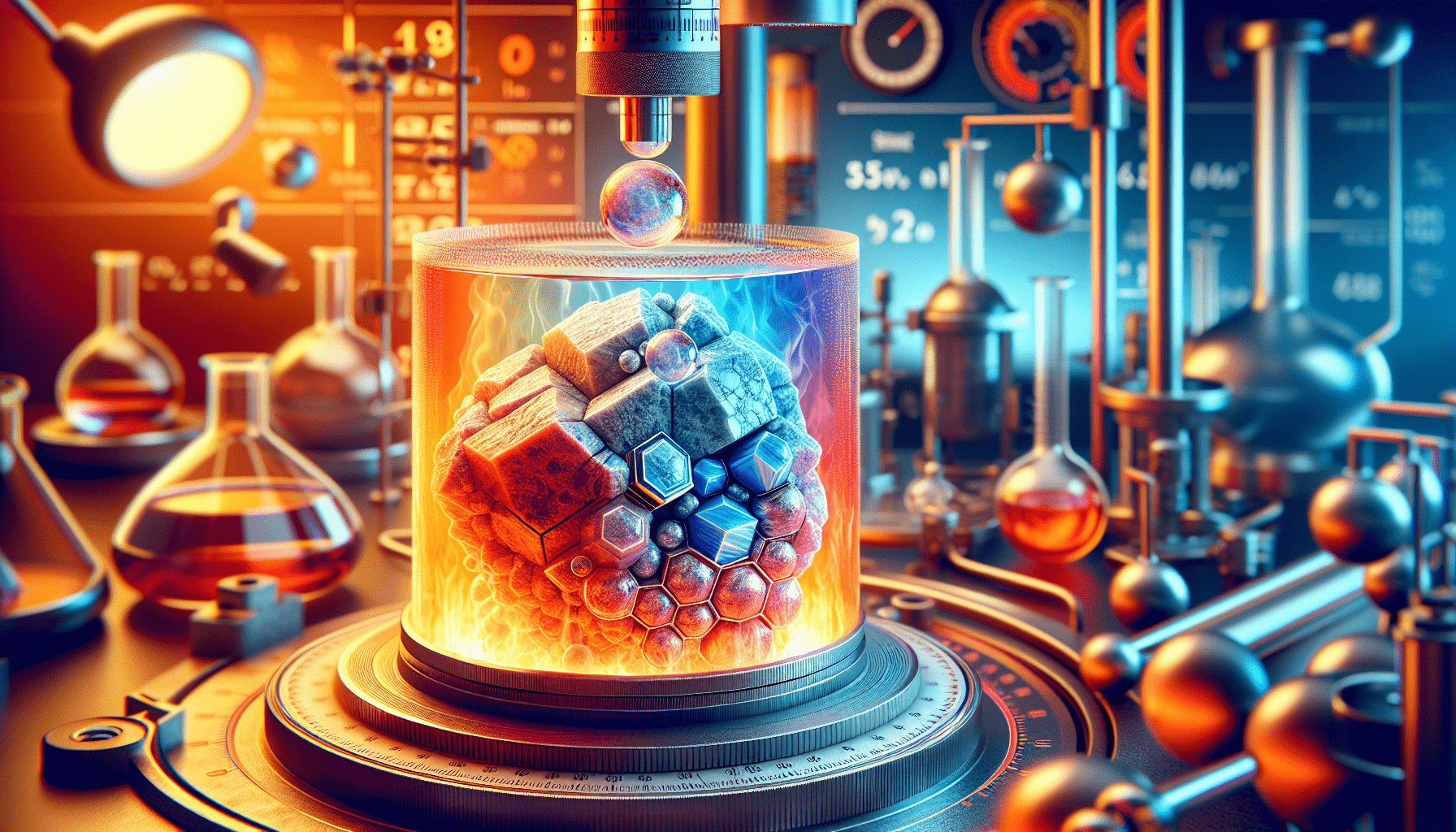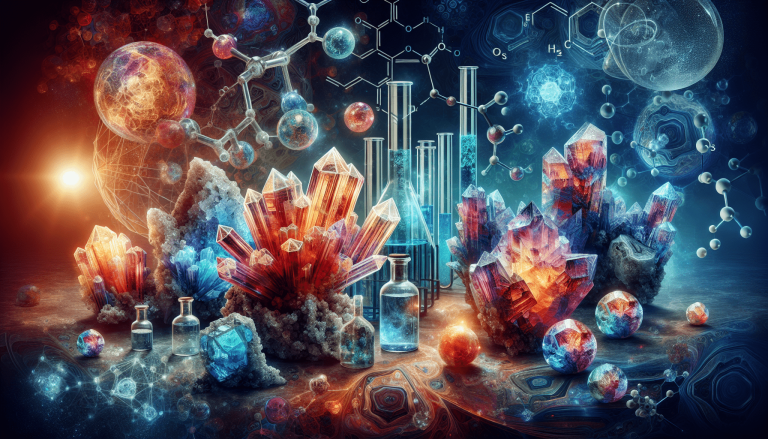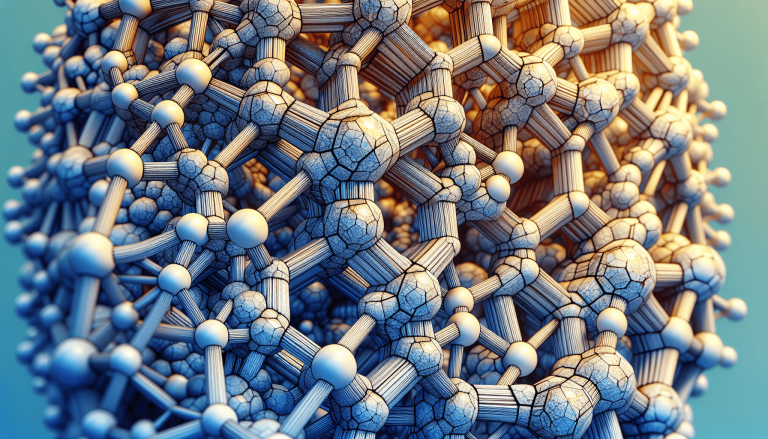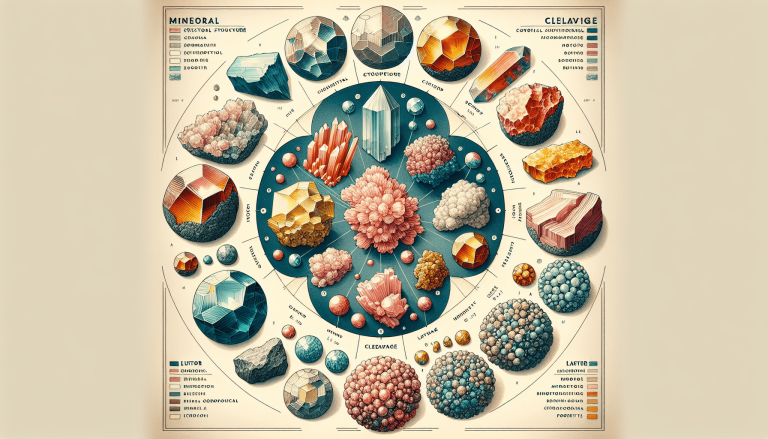Exploring The Impact Of Temperature And Pressure On Mineral Chemical Properties
In the fascinating realm of mineral chemistry, the impact of temperature and pressure on mineral chemical properties has become the subject of intense study. This article delves into the intricate relationship between these two factors and the resulting changes in mineral composition, structure, and properties. By examining the transformative effects of temperature and pressure on minerals, scientists are uncovering valuable insights that have far-reaching implications in various fields, including geology, materials science, and even industrial processes. Whether you’re a curious enthusiast or a professional seeking to expand your knowledge, this exploration of temperature and pressure’s influence on minerals will captivate and enlighten you.

Temperature and Pressure in Mineral Formation
Minerals are essential components of the Earth’s crust, and their formation is influenced by various factors, including temperature and pressure. Understanding the role of temperature and pressure in mineral formation is crucial for geologists and scientists studying the Earth’s processes. In this article, we will explore the effects of temperature and pressure on mineral chemical properties, phase transitions, geological processes, experimental methods for studying their effects, applications in science and industry, environmental impacts, and future directions in research.
The Role of Temperature in Mineral Formation
Temperature plays a significant role in mineral formation as it affects the chemical reactions and processes that occur within the Earth’s crust. High temperatures can cause atoms and ions within minerals to move more rapidly, leading to increased rates of chemical reactions. This increased mobility allows for the rearrangement of atoms and ions, leading to changes in crystal structure and chemical composition.
The Role of Pressure in Mineral Formation
In addition to temperature, pressure also influences the formation of minerals. Pressure refers to the force exerted on a mineral as a result of overlying rocks and sediment. Under high-pressure conditions, minerals can undergo compression, leading to a compression of their crystal lattice. This compression can result in changes in bond lengths and angles within the mineral, affecting its chemical properties and stability.
Interactions between Temperature and Pressure in Mineral Formation
Temperature and pressure often interact with each other in the formation of minerals. These interactions can have significant effects on mineral chemical properties and phase transitions. For example, an increase in temperature combined with high pressure can cause phase transitions, resulting in the formation of polymorphic minerals. Polymorphism refers to the ability of a mineral to exist in multiple crystal structures under different temperature and pressure conditions.
Effects of Temperature on Mineral Chemical Properties
Changes in Crystal Structure: Temperature can lead to changes in the crystal structure of minerals. As the temperature increases, atoms and ions within the crystal lattice may vibrate more vigorously, eventually breaking existing bonds and forming new ones. This can result in the transformation of a mineral’s crystal structure, giving rise to new properties and characteristics.
Alterations in Chemical Composition: Temperature changes can also cause alterations in the chemical composition of minerals. High temperatures can promote the diffusion of elements within a mineral, allowing for the exchange of atoms and ions between neighboring minerals or fluid phases. This exchange can lead to variations in the chemical composition, affecting the mineral’s overall properties.
Thermal Expansion and Contraction: Temperature variations can cause minerals to undergo thermal expansion or contraction. When minerals are heated, the increased thermal energy causes the atoms and ions within the mineral to move farther apart, leading to expansion. Conversely, when minerals are cooled, the atoms and ions come closer together, leading to contraction. These expansions and contractions can affect the overall stability and structure of the mineral.
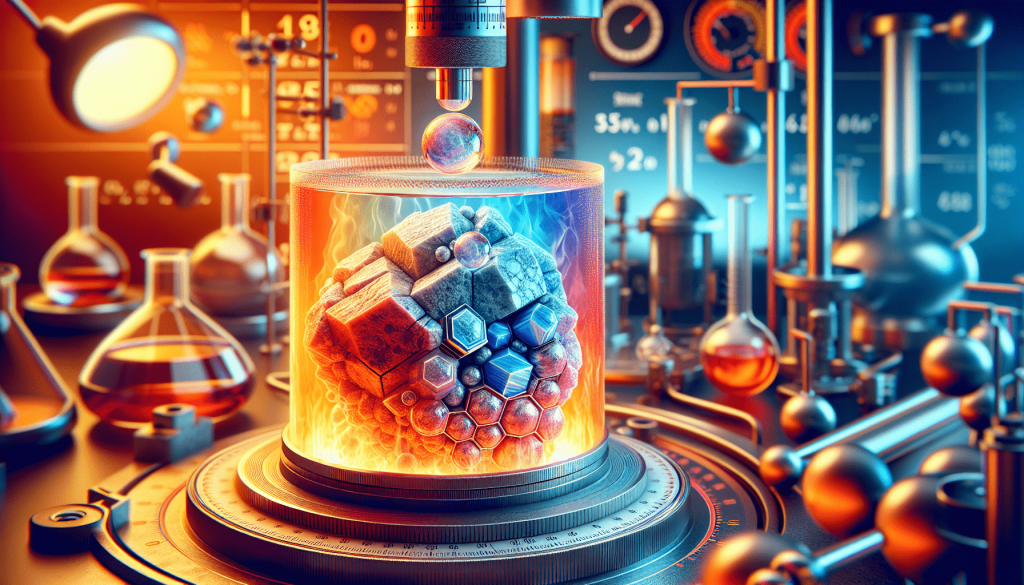
Effects of Pressure on Mineral Chemical Properties
Compression of Crystal Lattice: Under high-pressure conditions, minerals can become compressed, resulting in a reduction of their crystal lattice volume. This compression can cause changes in the arrangement of atoms and ions within the mineral, affecting its chemical properties. Compression can lead to an increased density of the mineral, altering its physical and chemical characteristics.
Changes in Bond Lengths and Angles: Pressure can also cause changes in bond lengths and angles within a mineral. As pressure increases, the distance between atoms and ions within a crystal lattice decreases, resulting in shorter bond lengths. This compression can affect the chemical bonds within the mineral, modifying its properties and stability. Similarly, the angles between bonds can also be altered, leading to changes in the mineral’s overall structure.
Alterations in Chemical Stability: Pressure changes can impact the chemical stability of minerals. Certain minerals may only be stable under specific pressure conditions, and alterations in pressure can cause destabilization or stabilization of these minerals. The availability of different chemical components and the introduction of new chemical environments due to pressure changes can affect the stability and reactivity of minerals.
Phase Transitions Due to Temperature and Pressure
Polymorphism in Minerals: Phase transitions due to temperature and pressure have been observed in many minerals, resulting in polymorphism. Polymorphic minerals are those that can exist in multiple crystal structures. Changes in temperature and pressure can cause the atoms and ions within the mineral to rearrange, leading to different crystal structures. Polymorphism often affects the physical properties and reactivity of minerals.
Metamorphic Changes: Metamorphism refers to the changes in minerals and rocks that occur due to high temperature and pressure conditions. Within the Earth’s crust, rocks can undergo metamorphism, resulting in the formation of new minerals. The combination of temperature and pressure alters the mineral assemblage within the rock, leading to the development of metamorphic minerals with different chemical properties.
Melting and Crystallization: Extremes in temperature and pressure can lead to the melting or crystallization of minerals. Increased temperatures can cause minerals to melt, transforming them into a molten or liquid state. Conversely, decreased temperatures can induce the crystallization of minerals from a molten or liquid state. These phase transitions can have significant implications for the formation and alteration of minerals within the Earth’s crust.
Role of Temperature and Pressure in Geological Processes
Formation of Igneous Rocks: Temperature and pressure are instrumental in the formation of igneous rocks. Igneous rocks originate from the solidification of molten materials, such as magma or lava. The cooling and crystallization of these molten materials under specific temperature and pressure conditions give rise to a variety of igneous rocks, each with distinct mineral compositions and textures.
Metamorphism and Metamorphic Rocks: Metamorphism is another geological process influenced by temperature and pressure. It involves the changes in mineral composition and texture of rocks due to the effects of elevated temperature and pressure. Metamorphic rocks are formed by the transformation of existing rocks under these conditions, resulting in the formation of new minerals and altered mineral assemblages.
Sediment Diagenesis and Lithification: The process of sediment diagenesis and lithification, which leads to the formation of sedimentary rocks, is also influenced by temperature and pressure. Diagenesis involves the physical and chemical changes that occur as sediments are compacted and cemented over time. The temperature and pressure conditions experienced during diagenesis can affect the formation of new minerals and the transformation of sedimentary rocks.
Experimental Methods for Studying Temperature and Pressure Effects
High-Pressure Laboratory Experiments: Scientists employ high-pressure laboratory experiments to simulate the conditions present within the Earth’s crust. These experiments involve subjecting minerals or rocks to controlled temperature and pressure conditions and observing their responses. High-pressure experiments allow researchers to study the effects of temperature and pressure on mineral chemical properties, phase transitions, and geological processes.
Thermodynamic Modeling: Thermodynamic modeling is a computational approach used to predict the behavior of minerals under different temperature and pressure conditions. By using thermodynamic properties of minerals and their reactions, researchers can simulate the effects of temperature and pressure on mineral stabilities and transformations. Thermodynamic modeling aids in understanding the complex interactions between temperature, pressure, and mineral chemical properties.
Geochemical Analysis Techniques: Geochemical analysis techniques enable the study of mineral chemical properties and their changes under different temperature and pressure conditions. Techniques such as electron microscopy, X-ray diffraction, and spectroscopy can provide valuable insights into the crystal structures, chemical compositions, and physical properties of minerals. These analyses help scientists understand how temperature and pressure affect mineral formation and alteration.
Applications in Science and Industry
Understanding Earth’s Interior: Investigating the effects of temperature and pressure on mineral chemical properties allows for a better understanding of the Earth’s interior. By studying the behavior of minerals under extreme conditions within the Earth’s crust, scientists can infer the conditions and processes occurring deep below the surface. This knowledge aids in unraveling the complex dynamics of the Earth’s interior.
Mineral Exploration and Resource Assessment: The study of temperature and pressure effects on mineral formation has practical applications in mineral exploration and resource assessment. By understanding the conditions necessary for the formation of specific minerals, geologists can identify regions with the potential for valuable mineral deposits. This knowledge is crucial for efficient mineral exploration and resource management.
Industrial Processes and Material Synthesis: Temperature and pressure are fundamental factors in industrial processes and material synthesis. Understanding the effects of these parameters on mineral chemical properties allows for the development of new materials and processes. Industries such as manufacturing, ceramics, and materials science rely on this knowledge to optimize their production processes and improve the properties of their products.
Environmental Impacts of Temperature and Pressure Changes
Effects on Hydrothermal Systems: Hydrothermal systems, characterized by the circulation of hot fluids through rocks, are highly influenced by temperature and pressure changes. Variations in temperature and pressure can affect the solubility of minerals in hydrothermal fluids, leading to precipitation or dissolution. These changes can impact the formation of mineral deposits and alter the geochemical conditions of hydrothermal systems.
Implications for Climate Change: Temperature and pressure changes can have implications for climate change. Alterations in the Earth’s temperature and pressure regimes can affect the stability of minerals and the movement of fluids within the Earth’s crust. These changes can, in turn, impact the release of greenhouse gases and other substances, potentially influencing climate patterns and processes.
Geological Hazards and Natural Disasters: Temperature and pressure changes can also contribute to geological hazards and natural disasters. Volcanic eruptions, earthquakes, and landslides are all phenomena influenced by temperature and pressure variations within the Earth’s crust. Understanding these effects can aid in predicting and mitigating the potential risks associated with such hazards.
Future Directions in Research
Advances in High-Pressure Technology: Continued advancements in high-pressure technology will enable researchers to explore the effects of even higher pressures on mineral chemical properties. These developments will provide a better understanding of the behavior of minerals under extreme conditions, opening new avenues for research and discovery.
Integration of Temperature and Pressure Effects in Modeling: Future research will focus on integrating temperature and pressure effects into comprehensive models that simulate mineral formation and transformation. Combining thermodynamic modeling, experimental data, and geochemical analysis techniques, scientists will develop more accurate and predictive models for understanding the complex interactions between temperature, pressure, and mineral chemical properties.
Exploration of Extreme Environments: Further research will seek to explore extreme environments where temperature and pressure conditions deviate significantly from the Earth’s surface. By studying these extreme environments, such as deep-sea hydrothermal vents or the interiors of other planets, scientists can gain insights into the potential for unique mineral formations and the limits of temperature and pressure tolerances.
Conclusion
Temperature and pressure play critical roles in the formation, transformation, and stability of minerals. Understanding the effects of these parameters on mineral chemical properties, phase transitions, and geological processes is fundamental for comprehending the dynamics of the Earth’s crust. Through experimental methods, thermodynamic modeling, and geochemical analysis techniques, scientists continue to advance our understanding of temperature and pressure effects on minerals. The applications of this knowledge range from resource exploration and industrial processes to predicting geological hazards and understanding environmental impacts. Future research will push the boundaries of high-pressure technology and further integrate temperature and pressure effects into modeling, paving the way for new discoveries in extreme environments.

